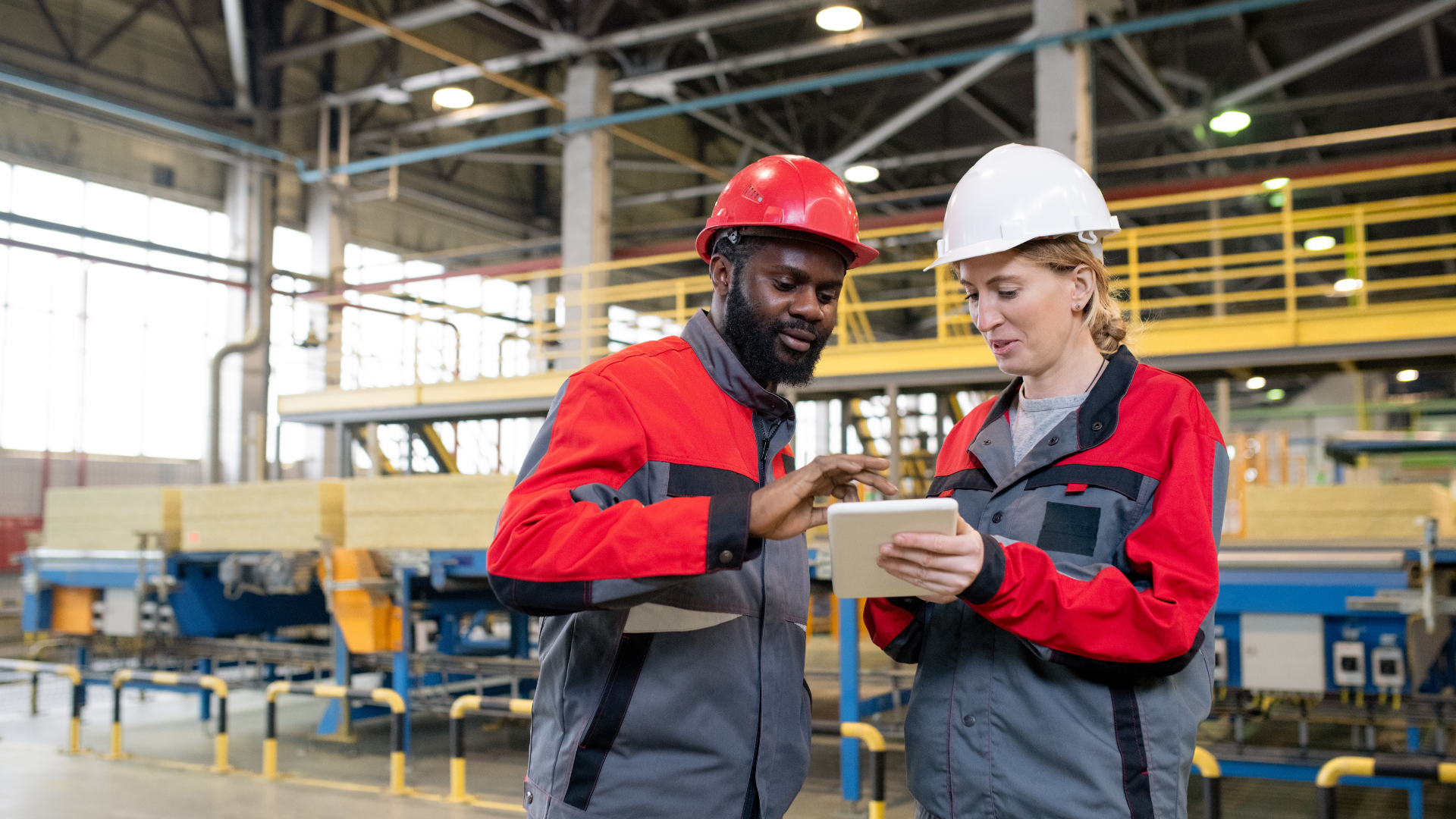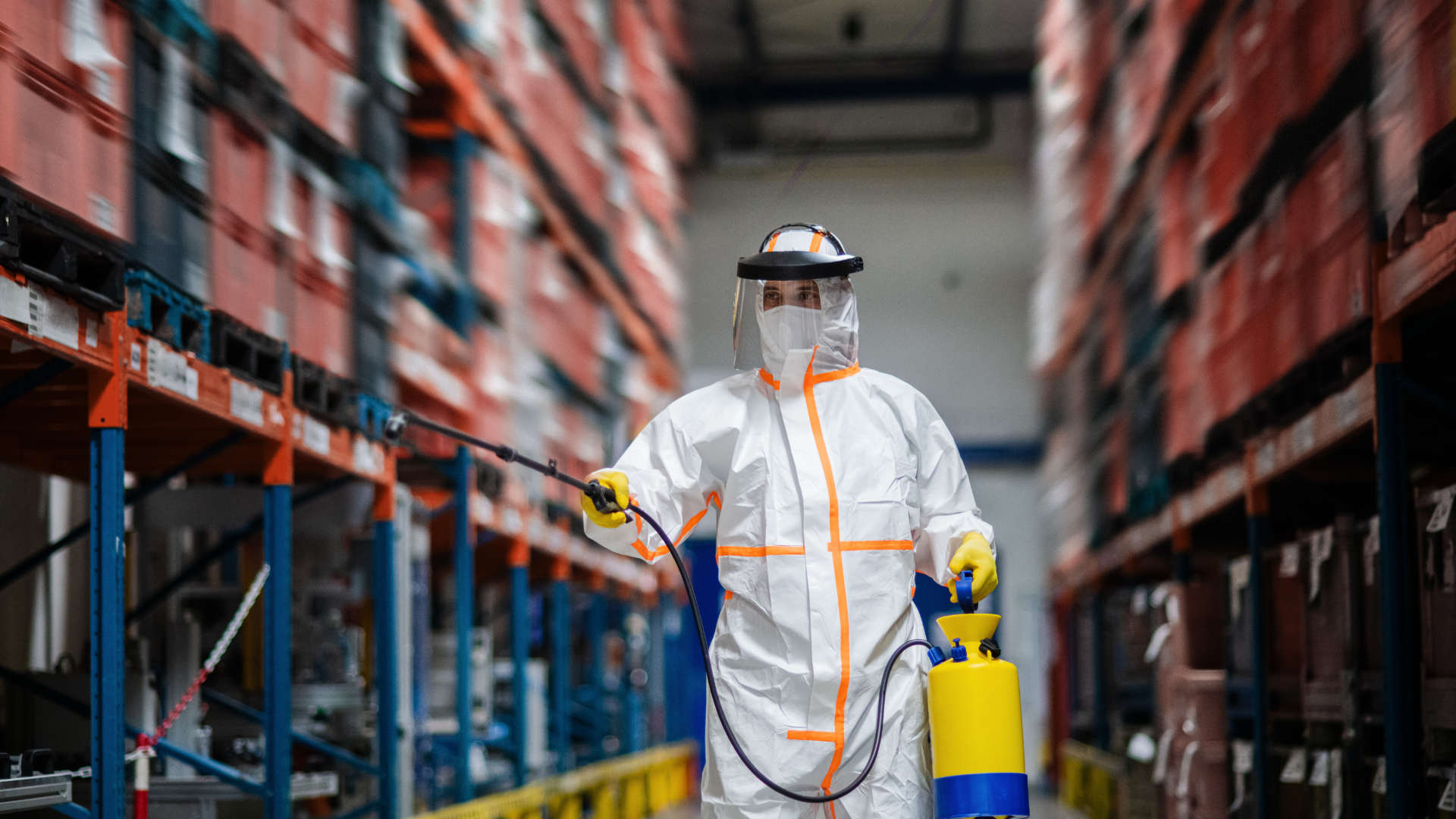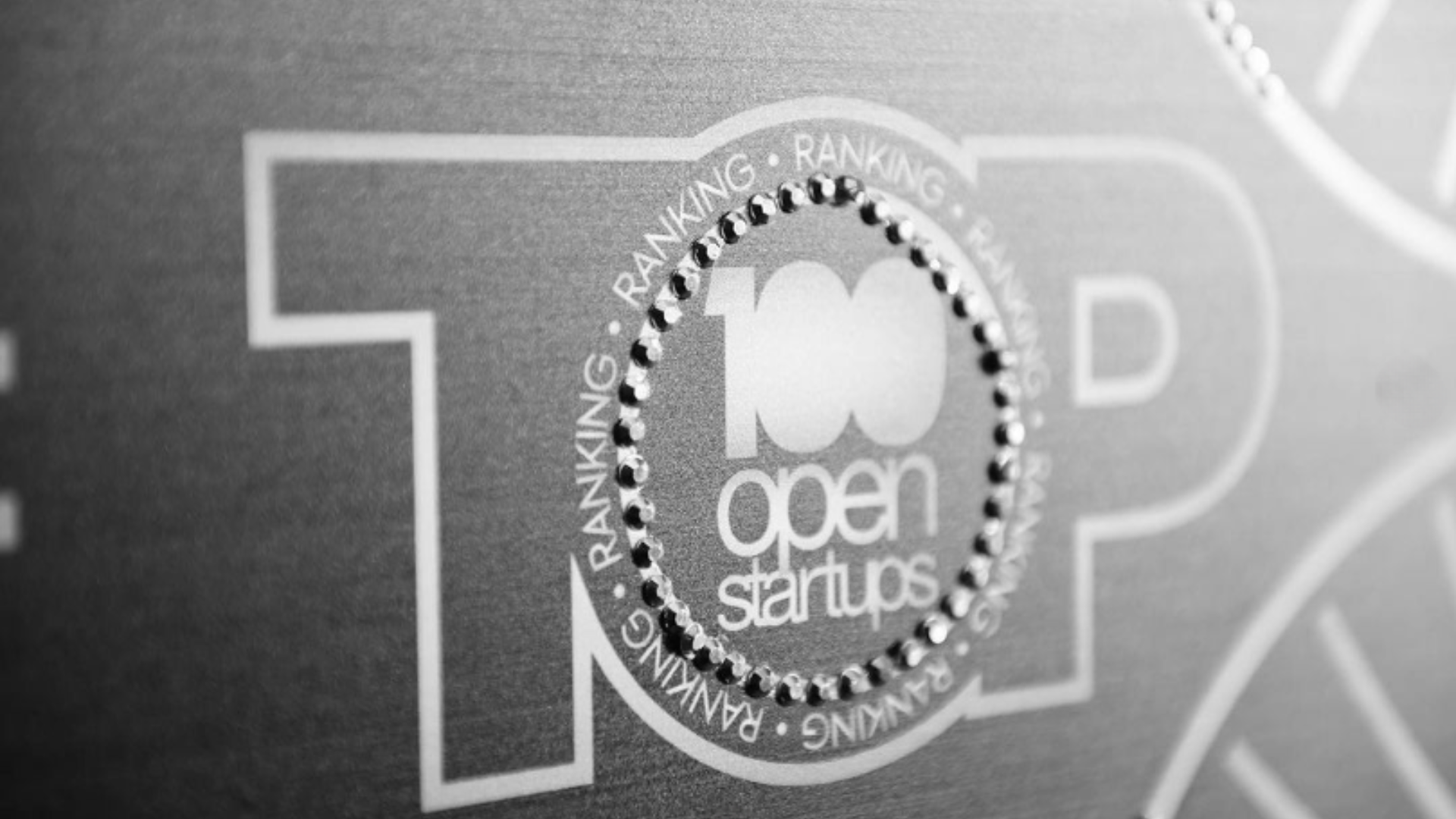Understand how moving towards Industry 5.0 can leverage your company. Understand the concept, its impacts and innovations.
Industry 5.0 is about adding the human touch to the innovations, automation and efficiency that Industry 4.0 has brought to us. It's not just about technology, it's about robots and humans working together.
The next industrial revolution is already happening.
What do you know about this new revolution and what Industry 5.0 can affect your business?
It may even seem strange to you, since it's been a while since we've been talking about Industry 4.0 and technological decentralization in industrial management.
However, this process of digitizing production operations and activities is still ongoing.
It turns out that Industry 5.0 marks the next step, turning the page on this new industrial revolution.
The integration between robots and humans in industrial management aims to achieve the so-called “humanization” of intelligent systems. Thus filling the gaps present in many automated processes.
This combination of humans and machines gives us the perfect blend between the precision of full industrial automation and the critical and cognitive skills of top business leaders.
What is Industry 5.0?
Industry 5.0 is the re-humanization of the race towards full automation. It is the recognition that questioning, insights, innovation, human creative potential and robotic, digital and automation advances are of equal value in the manufacturing process.
We know that a little over a decade ago we started to discuss the effects of Industry 4.0. However, we have already talked about an Industries 5.0 and all the changes it should bring along during this new evolution.
The new industrial era begins with the development of technologies linked to 4.0, particularly in the areas of ICT (Information and Communication Technology), AI (Artificial Intelligence) and robotics.
Increasingly powerful IoT devices and the consolidation of what we call CPS (cyber Physical System or cyber-physical systems) are one of the results we get from the combination and evolution of ICT and AI.
Emergence of the Industry 5.0 era?
The new era of manufacturing processes, known as Industry 5.0, is giving a lot to talk about. Since there are still some people who still mention Industry 4.0 as something that is still in development.
After all, which one are we in? Can we already say that we are in the era of Industry 5.0? When did this shift start to become reality?
Let's first answer the question: Where are we?
Just as industries diverge from each other, so do digitalization and technology adoption movements. It is impossible not to look and refer to large industries. Tesla Motors, Apple or Boeing are always pointed out as precursors of the Industry 5.0 era.
With advanced technologies that enable the interconnection of its human capital with intelligent robotic potential, companies like Tesla, which have already started to enter the 5.0 world headlong.
Tesla already has in the customization of its electric vehicles one of the main differentials in the market.
This, for example, is a point that micro, small and medium-sized companies in the industry have not yet reached, for them, the challenge is still in the digitization of their processes.
That is, starting from a scenario where all operational and strategic processes are purely analog, it is easier to move towards digitalization of the factory floor.
For these players, it is natural that the learning curve is greater. Therefore, for them, Industry 4.0 is still a reality and a goal to be achieved.
Now, and when did industry 5.0 emerge?
We can point out some signs as the main ones, such as the consolidation of 5G networks, the evolution of cloud computing (especially edge computing), operational technological advances on several fronts (mainly those that allow IoT devices to have computational capacity and processing without relying so heavily on the cloud).
However, perhaps the real milestone for the emergence of Industry 5.0 was the following:
Technology does not work alone, of course, there is automation, but all this depends on operators (even if in a small amount), programmers and maintenance personnel. For many of these tasks there is no possibility of automation.
Industry 5.0, what is your objective?
Industry 5.0 comes with the main objective of creating value beyond financial results. It is about sustainability, quality of life and transforming Industry into a vector for these objectives.
However this is complicated for society in a total way and not just for those involved in the manufacturing process.
Industry 5.0 seeks to put people at the center of processes, improving the following aspects of life:
- Inclusion
- Sustainability
- Quality of life
Precisely for seeking improvement in these aspects, we have seen several 4.0 and 5.0 initiatives happening mutually.
In concept, they are not opposite contents or with generational characteristics (where one ends, the other begins)
It is, in fact, an immersion between both, where together they are able to gradually transform society, initially moving one of its main pillars: the industry
As the study, commissioned by the European Commission, identified:
According to the study, the industry has potential “to achieve societal goals beyond jobs and growth to become a resilient provider of prosperity, making production respect the limits of our planet and putting the well-being of the industrial worker at the heart of the production process “.
>>Read also: Lean Manufacturing: concept and principles
What are the characteristics of Industry 5.0?
Its potential to optimize human efficiency and the possibilities to promote hyper-customization in manufacturing processes are the main characteristics of Industry 5.0.
Although it seems a little basic to point out these two points, know that they will not be reached out of nowhere. There is a process that leads industries to provide the hyper-customization of their products and to experience all the human potential of their teams, going through the following steps.
Interconnection Empowerment.
Man and machine collaboration is one of the ways to generate value in Industry 5.0, industrial robots (such as cobots, which we will explain below) will be a critical component in this journey.
The high customization capacity of Industry 5.0 will only be possible due to the use of these advanced robots, which can close the current design gap.
However, that doesn't mean robots will be at the forefront this time around.
The cognitive support
In fact, it is Human intelligence that will be the stage of Industry 5.0, putting itself at the forefront of processes. The ability to make decisions, customize and customize products will be the engine to enable automated processes.
We also want to say that there are no risks or threats to eliminate human work in Industry 5.0, quite the contrary, in this reality where human professionals will be acting in connection with robots, receiving help from them in industrial tasks.
In turn, workers will be cognitive support for greater efficiency in decision making.
Thus having a perfect marriage between the automation bias and the cognitive bias and, yes, data is the present and will certainly be even more valuable in the future.
However, in the business world, we learned that a certain level of human judgment can be decisive to prevent the company from being carried away by wrong or inadequate biases, that is, we need both automation and computing, as well as cognitive capacity, to find the right meaning behind the data.
Using this scale to find the perfect balance between productivity and efficiency.
>>Read also: Understand: what is Industrial Management?
What are the technologies involved in the Industry 5.0 process?
Despite the thin line between cognitive and technological potential, there is certainly a series of innovations and technologies that must be achieved for Industry 5.0 to succeed.
After all, its advances are aimed at establishing a basis for the human cognitive bias to have greater chances of shining. To make this possible, a series of technologies have been created or are in full development, focusing precisely on the evolution of strategic and operational processes.
Among a long list, we will cite the main ones:
- Biotechnology;
- Dark Analytics;
- Nanotechnology;
- Edge Computing;
- Machine Learning;
- additive manufacturing;
- Advanced robotics;
- Business Intelligence;
- Quantum computing;
- IOT – Internet of Things;
- AI – Artificial Intelligence;
- Cobots – Collaborative robots;
What are the impacts of Industry 5.0 for society?
With enormous potential for transformation for the world, Industry 5.0 tends to make manufacturing processes more sustainable, inclusive and, thus, improve everyone's quality of life.
In terms of operations, there is the action of Artificial Intelligence, which makes work easier. In this scenario, what is expected is a redefinition of human responsibilities and activities, especially in the context of the integration between man and machine.
In this way, production will be able to be lighter and more performative for workers, who will no longer be directly involved in the entire industrial journey.
In general, a table change is promised with Industry 5.0, bringing different benefits regardless of the point of view.
public initiative
- Greater investments in education to qualify the working population;
Companies
- Cost reduction;
- Waste reduction;
- Greater speed in manufacturing processes;
consumers
- Faster and cheaper production;
- Higher level of product quality;
- Greater speed on the part of companies in the assimilation of their specific needs;
>>Read also: Understand what Enabling Technologies are
What are the differences between industry 5.0 and 4.0?
As we have seen before, Industry 5.0 did not come to replace 4.0, but to be a natural evolution. Even so, and for this reason, there are fundamental differences between both movements.
Features of Industry 4.0
With the proposal to be the connectivity revolution, Industry 4.0, arrives with the proposal to keep the entire factory floor interconnected with the office.
Obtaining a greater flow of information and data, with the mass creation of "smart" technologies, this information serves as input for intelligent machines and other technological equipment to do a large part of the work in factories.
Being entirely process-focused, it is clear that many companies have evolved into Industry 4.0 with the customer experience in mind.
Another port for data to be used is mass customization.
However, the main objective has always been equipment connectivity, proof of which is what the MPI Group survey identified: about a third (31%) of today's production processes already incorporate some kind of native intelligent system or intelligent device.
Industry 5.0 characteristics
However, Industry 5.0 seeks something a little different and more fundamental, bringing as its main idea to use the technology developed by Industry 4.0, to benefit human beings.
Taking the focus from inside the factory floor, in Industry 5.0 we have characteristics such as:
- Interactive products;
- Hyper-Customization;
- Focus on Customer Experience;
- Responsive and Distributed Supply Chain;
In addition, one of the major risks that Industry 4.0 posed for society in general was the replacement of the workforce.
Falling to the ground with industry 5.0, where the focus is human-machine interconnectivity, developing the so-called “Super Smart Society”
Bringing as protagonists the cobots (collaborative robots), which we have already mentioned above, which are programmed to interact with humans in shared workplaces, helping in the mission of customizing deliveries.
Industry 5.0 aims to use the high capacity of machines to maintain high production volumes, but with superior quality, justified by this collaboration.
Main benefits of Industry 5.0
So far we have discovered everything about the concept and the practical part of Industry 5.0, even so, maybe you are wondering: “What are the real benefits for my business?”
We've talked a lot about the general goals of Industry 5.0, but we haven't talked about the central point: How does it help your company?
We will rule out 3 advantages of this transformation that can show its importance in a more enlightening way.
Cost optimization
Industry 5.0, in the long term, will allow your production process to be conducted more economically, profitably and assertively. Bringing a breakthrough to your cost management processes.
With the great potential gathered (man-machine), it will be possible to deliver products exactly the way your customer wants, meeting all their needs and expanding their reach among target audiences.
human participation
In this scenario, soft skills will be more than essential for employees to grow within the work environment, which tends to be more competitive, thus delivering better quality.
It will be a time of deep integration between technological and intelligent systems and collaborators, which means that automation becomes a tool so that the entire human potential of your team is put to the test, making them more strategic parts within your organizational structure. .
Industry 5.0 has been bringing all its spotlight to the company's human capital.
Automation
In Industry 5.0, humans are at the center of things, but automation is what surrounds them and makes their demands possible, in fact, it will be essential, so that the level of delivery improves exponentially.
Finally, even if automation is not the main focus of the Industry 5.0 concept, in practice it will play an important role in the development of manufacturing processes.
How to implement industry 5.0?
Since it is an unprecedented change: cooperation between humans and machines, the implementation of Industry 5.0 requires patience.
Some very specific challenges presented themselves on this journey:
- Workforce: your employees will have to develop new skill sets, we're talking about soft skills, technical and programmatic skills, as well as understanding how to cooperate with robots and machines in an almost “hybrid” shop floor.
- Adoption of new technologies: Industry 5.0 only works with the adoption of new technologies, and you know, this is a process that can take effort and time.
- Investment needs: We also talk about the money factor. A cobot is not something fully accessible to all companies. Improving your production lines can take some time and require greater investment.
BMS Manufacturing 360
Industry 5.0 is inevitable, the path is complex, but it starts with the constant digitization of your industry. Your company can count on the best industrial software on the market BMS Manufacturing 360.
O BMS Manufacturing 360 is an innovative and flexible system used in all types of industries, offering more confidence, assertiveness, practicality and more productive processes for your industry.
With it in your company, you significantly advance in the search for human-machine interconnectivity in the operational environment, after all, we will bring end-to-end integration, which provides total automation resources for your company.
O BMS Manufacturing 360, with an IoT system, optimizes your company's processes, automates production lines, customizes deliveries and analyzes data on all operational actions of your business in real time.
Revolutionize your business with BMS Manufacturing 360, advancing in Industry 4.0 and increasingly entering the 5.0 reality

















